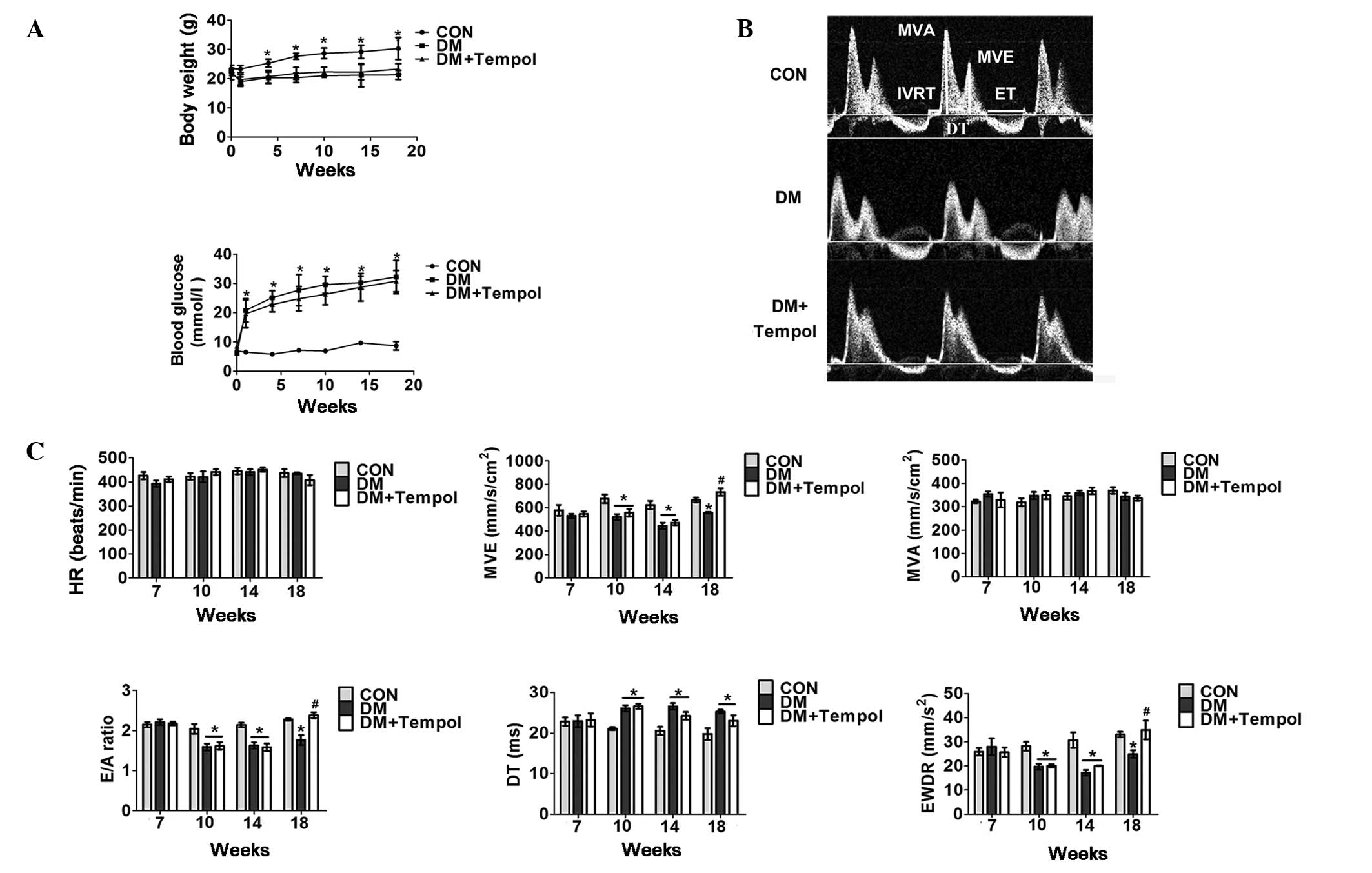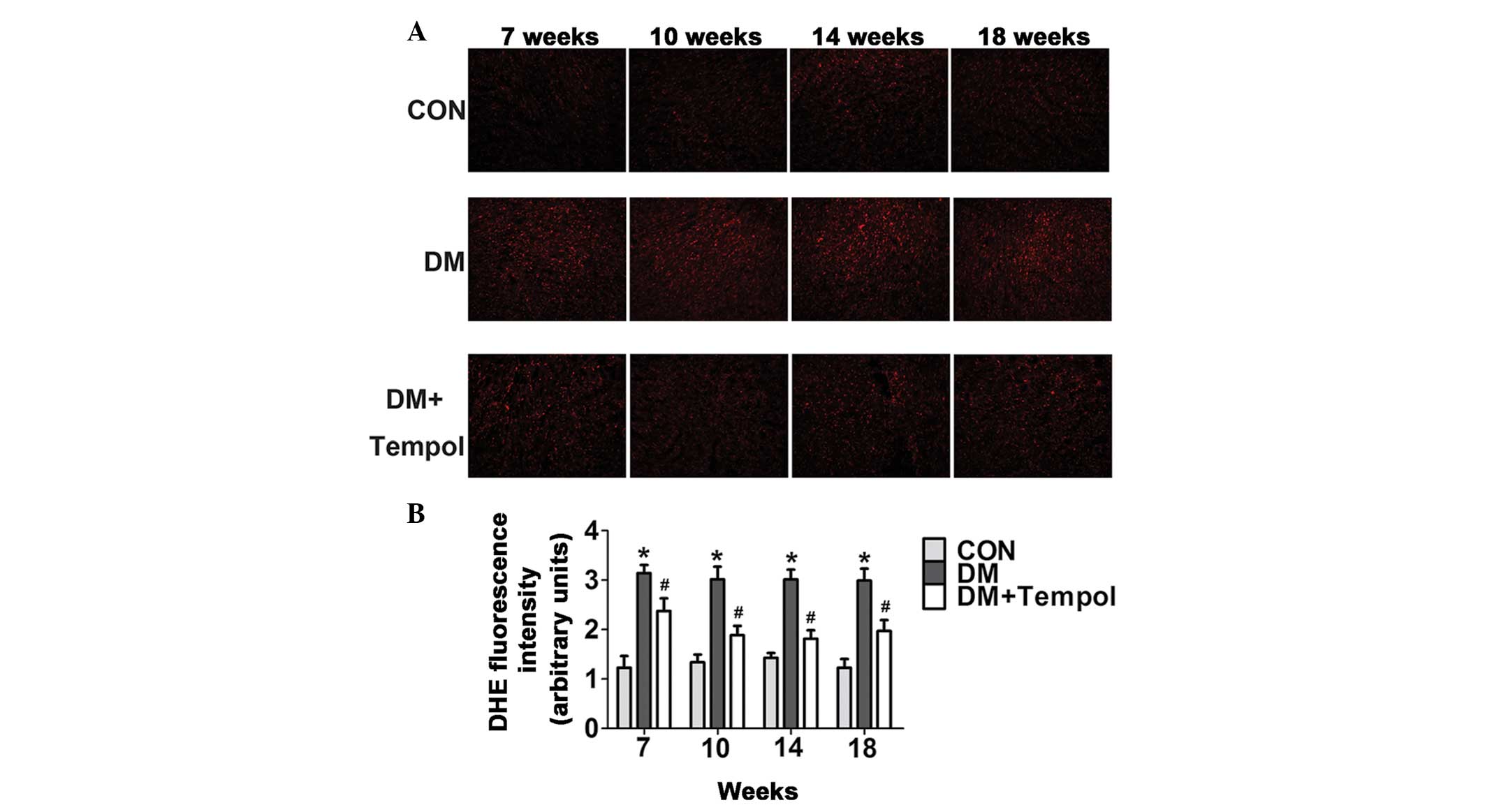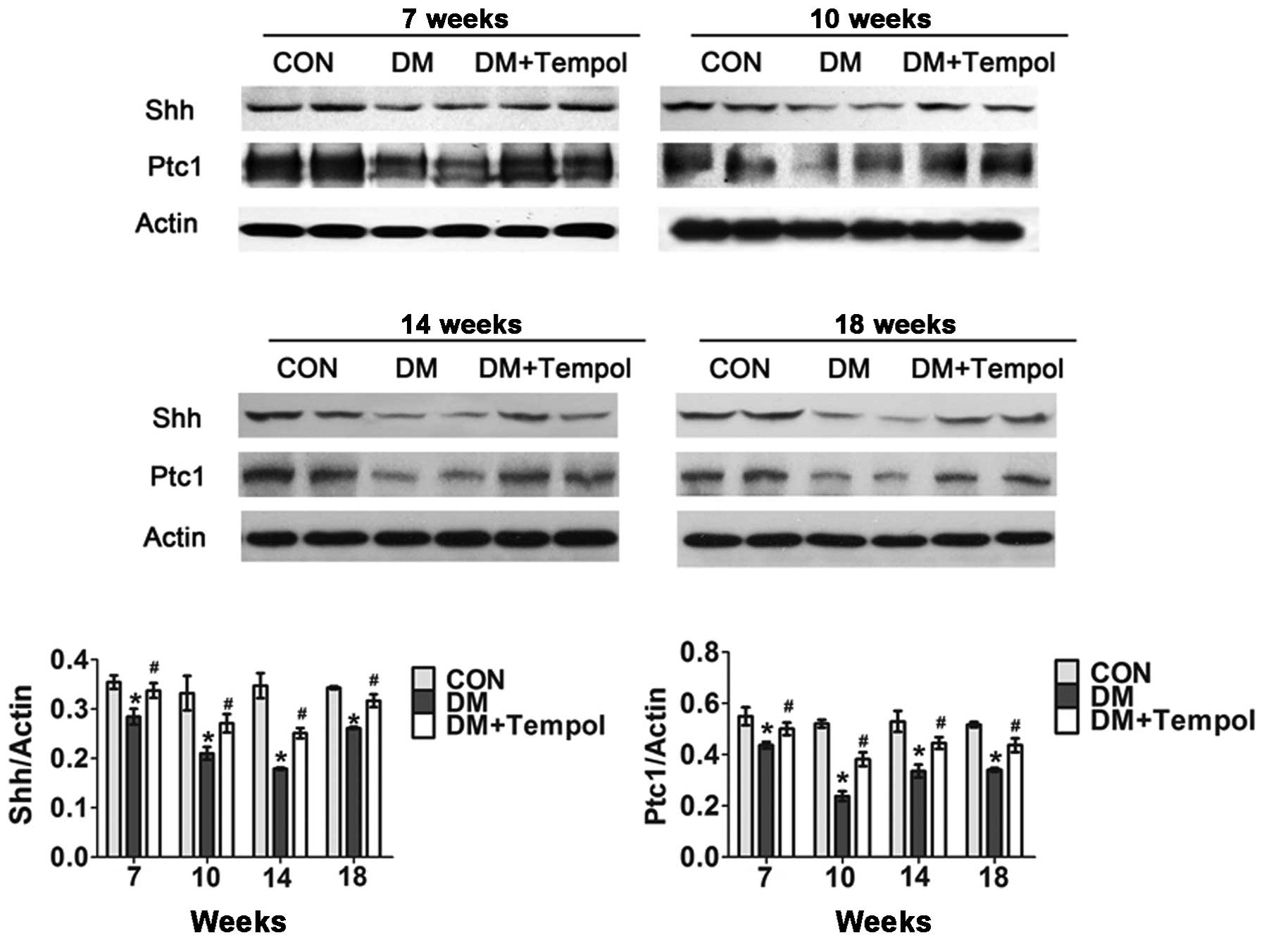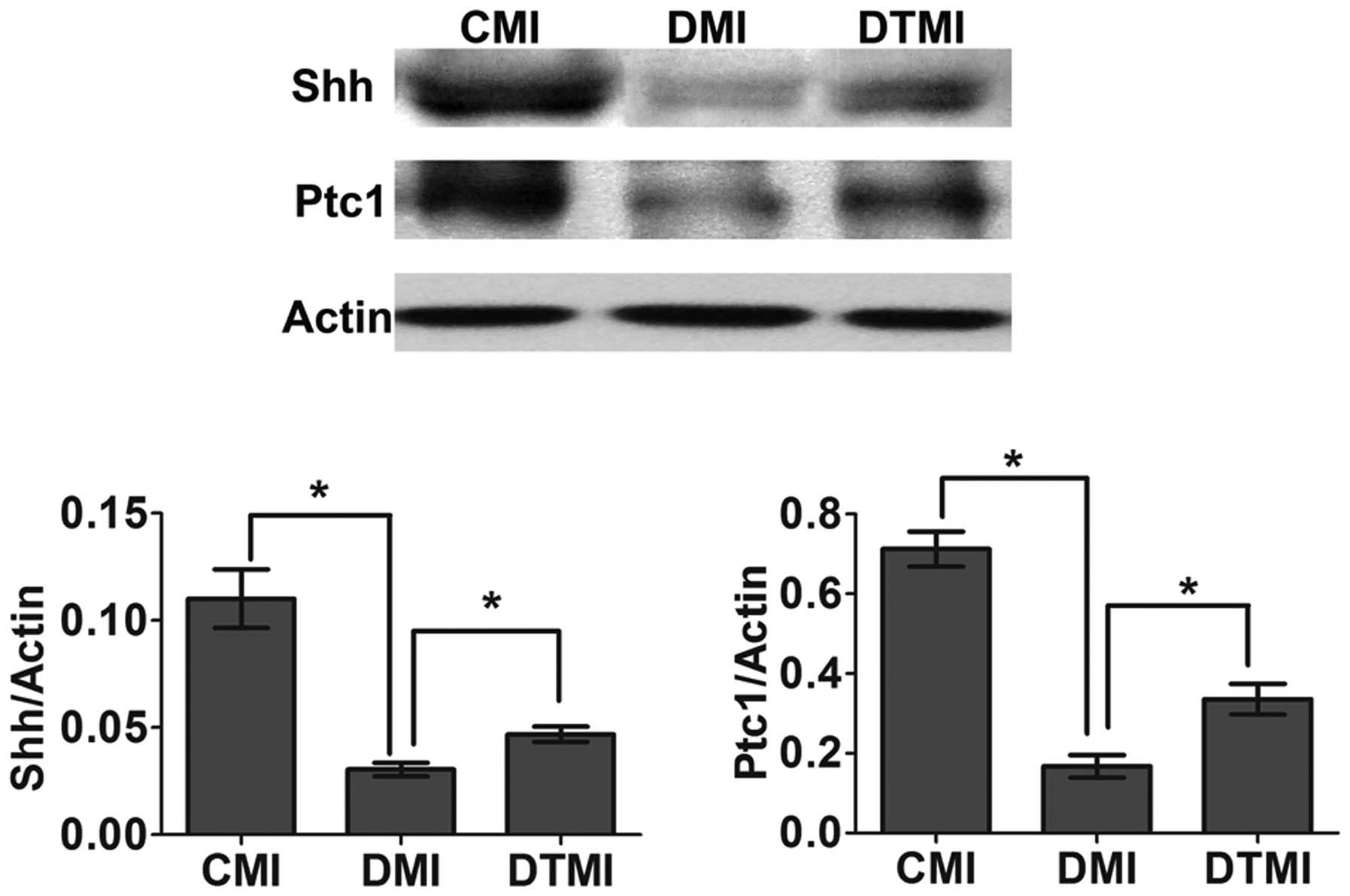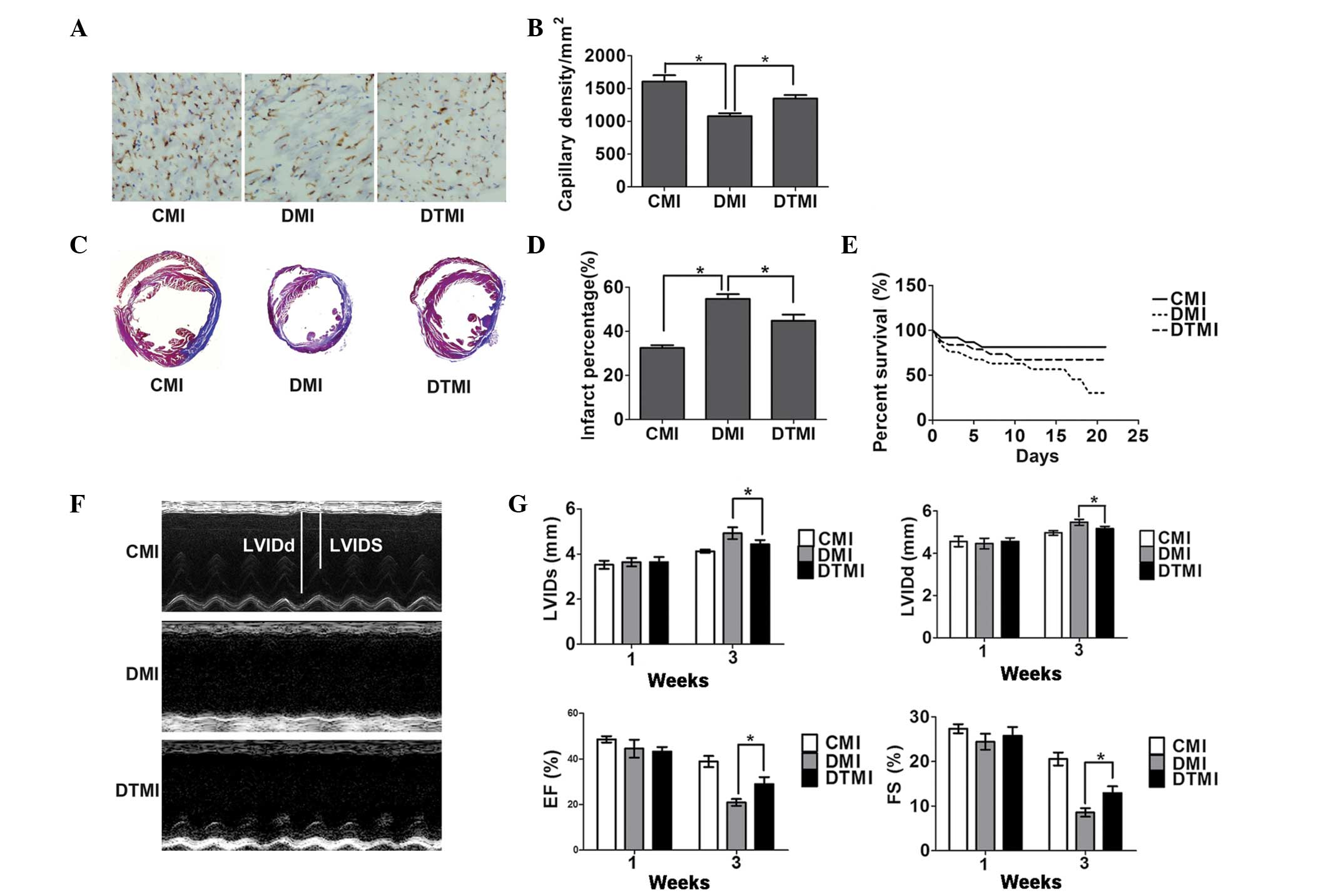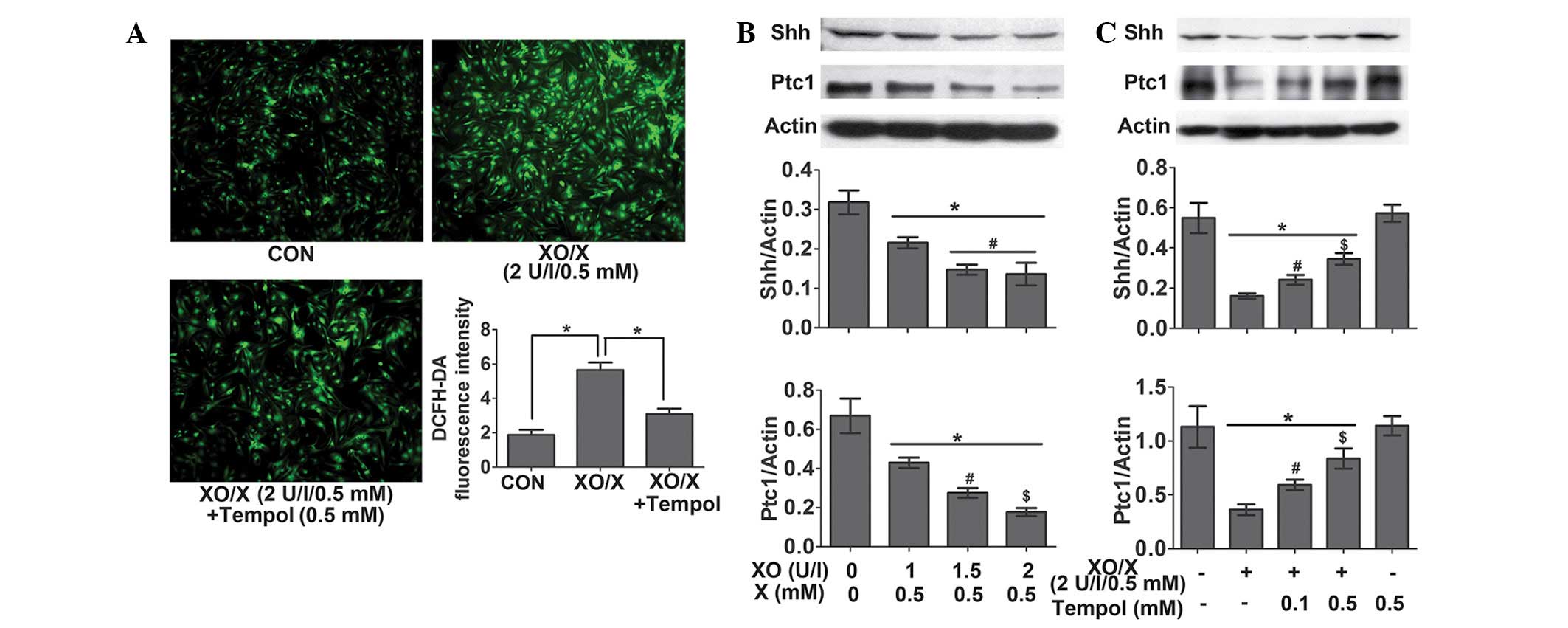|
1
|
Krum H and Gilbert RE: Demographics and
concomitant disorders in heart failure. Lancet. 362:147–158. 2003.
View Article : Google Scholar : PubMed/NCBI
|
|
2
|
Marfella R, Filippo CD, Portoghese M,
Siniscalchi M, Martis S, Ferraraccio F, Gustafierro S, Nicoletti G,
Barbieri M, Coppola A, et al: The ubiquitin-proteasome system
contributes to the inflammatory injury in ischemic diabetic
myocardium: The role of glycemic control. Cardiovasc Pathol.
18:332–345. 2009. View Article : Google Scholar : PubMed/NCBI
|
|
3
|
Shishido T, Woo CH, Ding B, McClain C,
Molina CA, Yan C, Yang J and Abe J: Effects of MEK5/ERK5
association on small ubiquitin-related modification of ERK5:
Implications for diabetic ventricular dysfunction after myocardial
infarction. Circ Res. 102:1416–1425. 2008. View Article : Google Scholar : PubMed/NCBI
|
|
4
|
Bucciarelli LG, Ananthakrishnan R, Hwang
YC, Kaneko M, Song F, Sell DR, Strauch C, Monnier VM, Yan SF,
Schmidt AM and Ramasamy R: RAGE and modulation of ischemic injury
in the diabetic myocardium. Diabetes. 57:1941–1951. 2008.
View Article : Google Scholar : PubMed/NCBI
|
|
5
|
Samuel SM, Thirunavukkarasu M, Penumathsa
SV, Koneru S, Zhan L, Maulik G, Sudhakaran PR and Maulik N:
Thioredoxin-1 gene therapy enhances angiogenic signaling and
reduces ventricular remodeling in infarcted myocardium of diabetic
rats. Circulation. 121:1244–1255. 2010. View Article : Google Scholar : PubMed/NCBI
|
|
6
|
Di Filippo C, Marfella R, Cuzzocrea S,
Piegari E, Petronella P, Giugliano D, Rossi F and D'Amico M:
Hyperglycemia in streptozotocin-induced diabetic rat increases
infarct size associated with low levels of myocardial HO-1 during
ischemia/reperfusion. Diabetes. 54:803–810. 2005. View Article : Google Scholar : PubMed/NCBI
|
|
7
|
Marfella R, D'Amico M, Di Filippo C,
Piegari E, Nappo F, Esposito K, Berrino L, Rossi F and Giugliano D:
Myocardial infarction in diabetic rats: Role of hyperglycaemia on
infarct size and early expression of hypoxia-inducible factor 1.
Diabetologia. 45:1172–1181. 2002. View Article : Google Scholar : PubMed/NCBI
|
|
8
|
Mimeault M and Batra SK: Frequent
deregulations in the hedgehog signaling network and cross-talks
with the epidermal growth factor receptor pathway involved in
cancer progression and targeted therapies. Pharmacol Rev.
62:497–524. 2010. View Article : Google Scholar : PubMed/NCBI
|
|
9
|
Lewis PM, Dunn MP, McMahon JA, Logan M,
Martin JF, St-Jacques B and McMahon AP: Cholesterol modification of
sonic hedgehog is required for long-range signaling activity and
effective modulation of signaling by Ptc1. Cell. 105:599–612. 2001.
View Article : Google Scholar : PubMed/NCBI
|
|
10
|
Chari NS and McDonnell TJ: The sonic
hedgehog signaling network in development and neoplasia. Adv Anat
Pathol. 14:344–352. 2007. View Article : Google Scholar : PubMed/NCBI
|
|
11
|
Varjosalo M and Taipale J: Hedgehog
signaling. J Cell Sci. 120:3–6. 2007. View Article : Google Scholar : PubMed/NCBI
|
|
12
|
Kusano KF, Pola R, Murayama T, Curry C,
Kawamoto A, Iwakura A, Shintani S, Ii M, Asai J, Tkebuchava T, et
al: Sonic hedgehog myocardial gene therapy: Tissue repair through
transient reconstitution of embryonic signaling. Nat Med.
11:1197–1204. 2005. View
Article : Google Scholar : PubMed/NCBI
|
|
13
|
Ueda K, Takano H, Niitsuma Y, Hasegawa H,
Uchiyama R, Oka T, Miyazaki M, Nakaya H and Komuro I: Sonic
hedgehog is a critical mediator of erythropoietin-induced cardiac
protection in mice. J Clin Invest. 120:2016–2029. 2010. View Article : Google Scholar : PubMed/NCBI
|
|
14
|
Xiao Q, Hou N, Wang YP, He LS, He YH,
Zhang GP, Yi Q, Liu SM, Chen MS and Luo JD: Impaired sonic hedgehog
pathway contributes to cardiac dysfunction in type 1 diabetic mice
with myocardial infarction. Cardiovas Res. 95:507–516. 2012.
View Article : Google Scholar
|
|
15
|
Giacco F and Brownlee M: Oxidative stress
and diabetic complications. Circ Res. 107:1058–1070. 2010.
View Article : Google Scholar : PubMed/NCBI
|
|
16
|
Newsholme P, Haber EP, Hirabara SM,
Rebelato EL, Procopio J, Morgan D, Oliviera-Emilio HC, Carpinelli
AR and Curi R: Diabetes associated cell stress and dysfunction:
Role of mitochondrial and non-mitochondrial ROS production and
activity. J Physiol. 583:9–24. 2007. View Article : Google Scholar : PubMed/NCBI
|
|
17
|
Martinon F: Signaling by ROS drives
inflammasome activation. Eur J Immunol. 40:616–619. 2010.
View Article : Google Scholar : PubMed/NCBI
|
|
18
|
Wang Y and Tabas I: Emerging roles of
mitochondria ROS in atherosclerotic lesions: causation or
association? J Atheroscler Thromb. 21:381–390. 2014. View Article : Google Scholar : PubMed/NCBI
|
|
19
|
Sabharwal SS and Schumacker PT:
Mitochondrial ROS in cancer: Initiators, amplifiers or an Achilles
heel? Nat Rev Cancer. 14:709–721. 2014. View Article : Google Scholar : PubMed/NCBI
|
|
20
|
de Vries HE, Witte M, Hondius D,
Rozemuller AJ, Drukarch B, Hoozemans J and van Horssen J:
Nrf2-induced antioxidant protection: A promising target to
counteract ROS-mediated damage in neurodegenerative disease? Free
Radic Biol Med. 45:1375–1383. 2008. View Article : Google Scholar : PubMed/NCBI
|
|
21
|
Pennathur S and Heinecke JW: Mechanisms
for oxidative stress in diabetic cardiovascular disease. Antioxid
Redox Signal. 9:955–969. 2007. View Article : Google Scholar : PubMed/NCBI
|
|
22
|
Hou N, Luo MS, Liu SM, Zhang HN, Xiao Q,
Sun P, Zhang GS, Luo JD and Chen MS: Leptin induces hypertrophy
through activating the peroxisome proliferator-activated receptor α
pathway in cultured neonatal rat cardiomyocytes. Clin Exp Pharmacol
Physiol. 37:1087–1095. 2010. View Article : Google Scholar : PubMed/NCBI
|
|
23
|
Khullar M, Al-Shudiefat AA, Ludke A,
Binepal G and Singal PK: Oxidative stress: A key contributor to
diabetic cardiomyopathy. Can J Physiol Pharmacol. 88:233–240. 2010.
View Article : Google Scholar : PubMed/NCBI
|
|
24
|
Pitocco D, Zaccardi F, Di Stasio E,
Romitelli F, Santini SA, Zuppi C and Ghirlanda G: Oxidative stress,
nitric oxide, and diabetes. Rev Diabet Stud. 7:15–25. 2010.
View Article : Google Scholar : PubMed/NCBI
|
|
25
|
Wilcox CS: Effects of tempol and
redox-cycling nitroxides in models of oxidative stress. Pharmacol
Ther. 126:119–145. 2010. View Article : Google Scholar : PubMed/NCBI
|
|
26
|
Jiang Q: Natural forms of vitamin E:
Metabolism, antioxidant, and anti-inflammatory activities and their
role in disease prevention and therapy. Free Radic Biol Med.
72:76–90. 2014. View Article : Google Scholar : PubMed/NCBI
|
|
27
|
Danta CC and Piplani P: The discovery and
development of new potential antioxidant agents for the treatment
of neurodegenerative diseases. Expert Opin Drug Discov.
9:1205–1222. 2014. View Article : Google Scholar : PubMed/NCBI
|
|
28
|
Feng Y and Wang X: Antioxidant therapies
for Alzheimers disease. Oxid Med Cell Longev. 2012:2012. View Article : Google Scholar : PubMed/NCBI
|
|
29
|
Kamat CD, Gadal S, Mhatre M, Williamson
KS, Pye QN and Hensley K: Antioxidants in central nervous system
diseases: Preclinical promise and translational challenges. J
Alzheimers Dis. 15:473–493. 2008.PubMed/NCBI
|
|
30
|
Boodhwani M and Sellke FW: Therapeutic
angiogenesis in diabetes and hypercholesterolemia: Influence of
oxidative stress. Antioxid Redox Signal. 11:1945–1959. 2009.
View Article : Google Scholar : PubMed/NCBI
|
|
31
|
Napoli C, Williams-Ignarro S, de Nigris F,
de Rosa G, Lerman LO, Farzati B, Matarazzo A, Sica G, Botti C,
Fiore A, et al: Beneficial effects of concurrent autologous bone
marrow cell therapy and metabolic intervention in ischemia-induced
angiogenesis in the mouse hindlimb. Proc Natl Acad Sci USA.
102:17202–17206. 2005. View Article : Google Scholar : PubMed/NCBI
|















